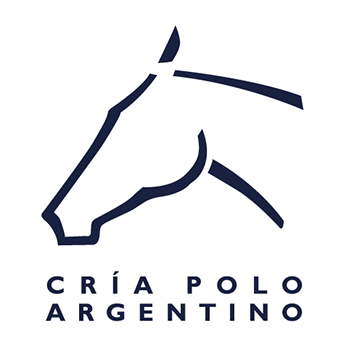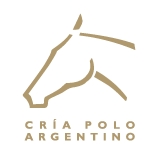
PRESENTATION
POLO ARGENTINO
When polo began in Argentina over 120 years ago, players began to worry about their mounts. From then on, the search began for the most adequate type of horse for the game.
The guidelines for this selection were tameness, docility, speed, sensitiveness, rusticity and a bone and muscle structure that would adapt to the demands of the game. Those responsible for this selection were the breeders, players, trainers (grooms), horseshoers and veterinarians linked to the sport.
The native environment where these improvements took place was always-or mostly- in the extensive pampa plains, one of the best regions in the world for raising horses.
Polo Argentino is a product that boasts characteristics that are different from those of other breeds, not only as regards genotype but also phenotype, and this has made it the most adequate horse for the game. In a demanding activity such as polo, it is convenient to play ponies that have been prepared specifically to that end.
AACCP
The Argentine Association of Polo Pony Breeders was created in 1984 as a result of progress made in the raising of polo ponies and because of the need of horse breeders to transform their success into a new breed.
It was created in order to promote the breed and its betterment based on aptitude; to organize the register and inspections; to encourage the registration of playing mares as future breeder mares and of playing stallions; to encourage the investigation into and practice of artificial insemination and the study of zootechnics, embryo transplant and all other improvement techniques.
Its founders had the forethought to create a modern, open breed, making the best use of new reproduction techniques-such as embryo transplant, which has accelerated the enhancement of the breed to a point that was completely unexpected-by which soon we will arrive at the fourth generation required by the European Economic Community for its acceptance as a definite breed within that continent.
The Association carries out a strict control of the genealogical registers through periodic visits from inspectors to the breeding establishments and cooperates with the Argentine Rural Association, responsible for the introduction of this system.
POLO ARGENTINO BREED
This is how at the present time we have achieved a polo pony biotype that is highly efficient as regards its skills.
The origins of this breed are to be found in the criollo (native) horses that already existed in the area and were used to play the game and which were selected for breeding. Simultaneously-and brought in specially by Anglo-Argentine players-the introduction of thoroughbred racehorses (S.P.C.) began, which accelerated crossbreeding and began slowly to absorb the original criollo.
In time the Quarter Mile and Arab breeds were incorporated, though in a lesser degree, to make the most of certain special characteristics of each breed. This great genetic variability, added to a rigorous selection generated by the game itself and to the naturally favorable conditions of the area, are what make Polo Argentino unique in the world.
POLO ARGENTINO MAP
The results are plain to see: to date the AACP is made up of over 260 members in Argentina and in other countries of the world; over 24,000 registered breeding mares and 7,700 registered male breeders.
The breed is developing steadily: there is an increase in specimens that take part each year in the Argentine Open Championship as well as in other high handicap tournaments. The number of ponies exhibited annually at the Rural Exhibition in Palermo and other horse shows is also on the increase.
Registered breeders have the advantage of being able to trade their Polo Argentino Products with a pedigree registration that is endorsed by the Argentine Association of Polo Pony Breeders and by the Argentine Rural Association. Additionally, the information supplied by this registration boosts breed improvement and gives purchasers the chance to consult among an important list of breeders.
STANDARD
Height: 1.56 metres.
Average weight: 400 to 500 kilograms.
Shape: Thick, muscular, deep body.
Physical conformation: Strong bones.
Temperament: Sanguine.
Head: Well proportioned and clear-cut. Predominantly rectilinear profile and well separated but not sharp cheekbones.
Ears: Medium in size, thin, pointed and well placed.
Forehead: Large and wide.
Eyes: Large, clear, full and brilliant. Thin eyelids. Lively expression.
Muzzle: Delicate with flexible and dilated nostrils.
Neck: Long, elegant, well inserted and positioned.

SHAPE
Should submit either three successive and harmonious ostensibly convex curves as illustrated below:


